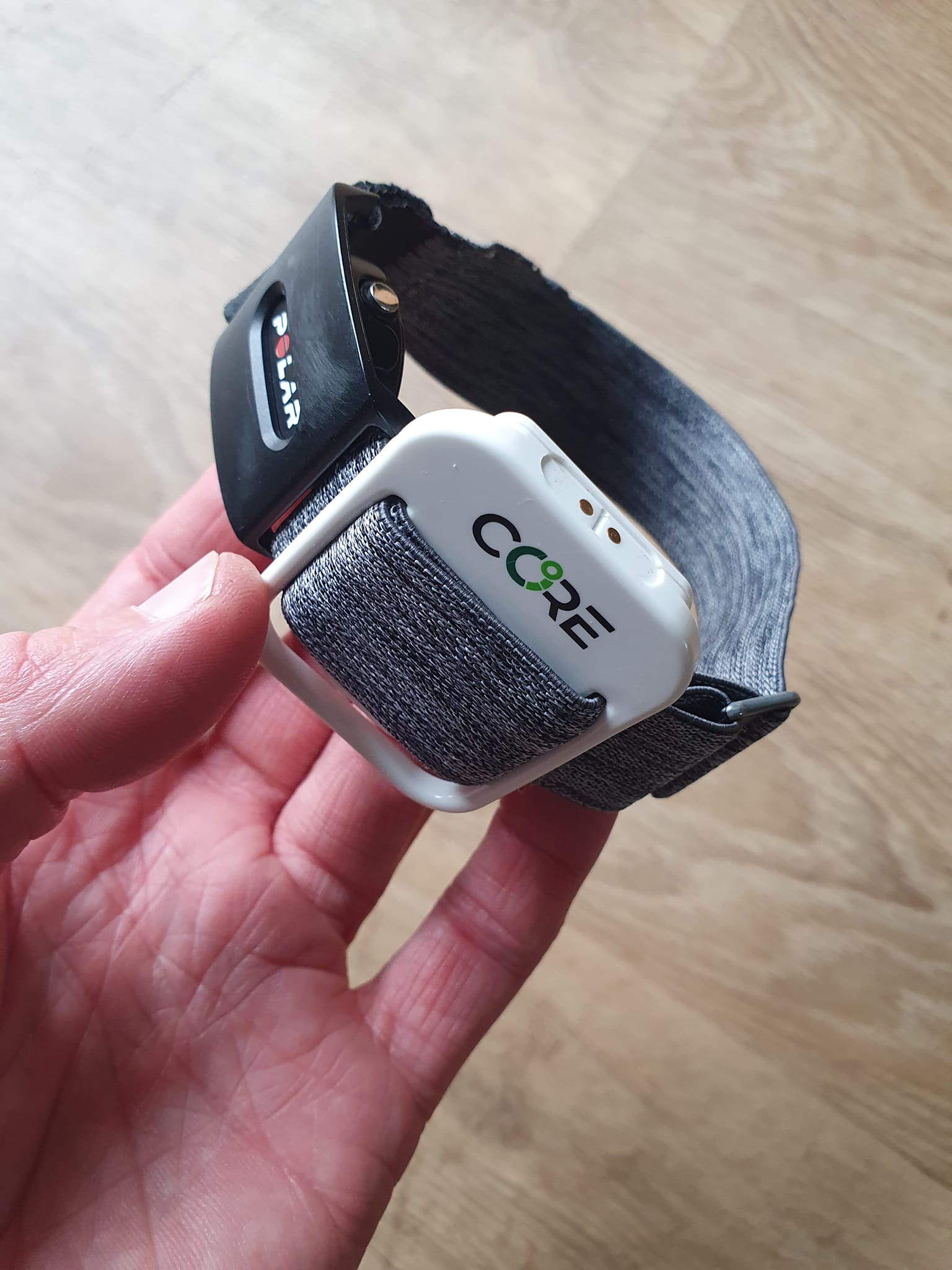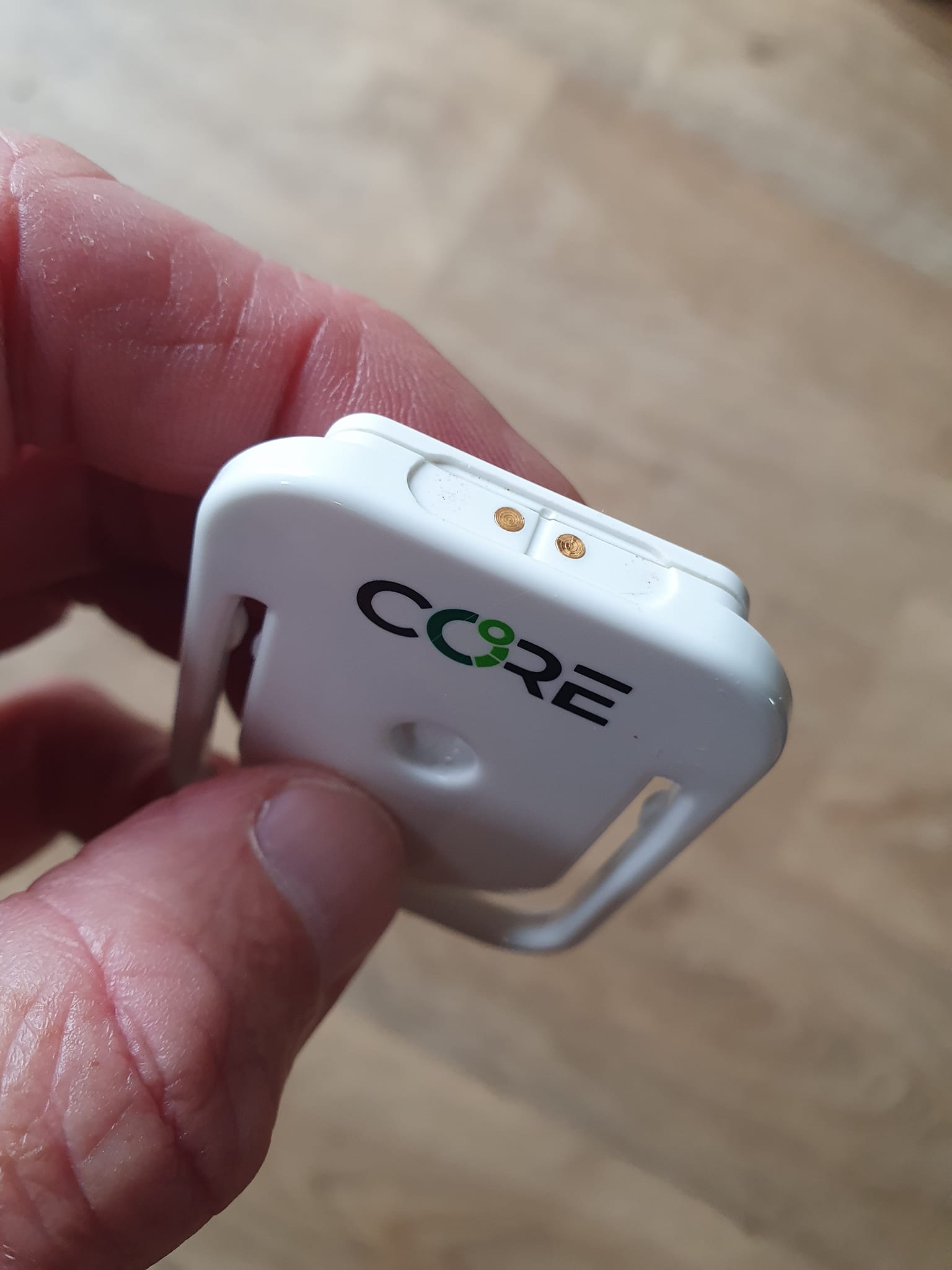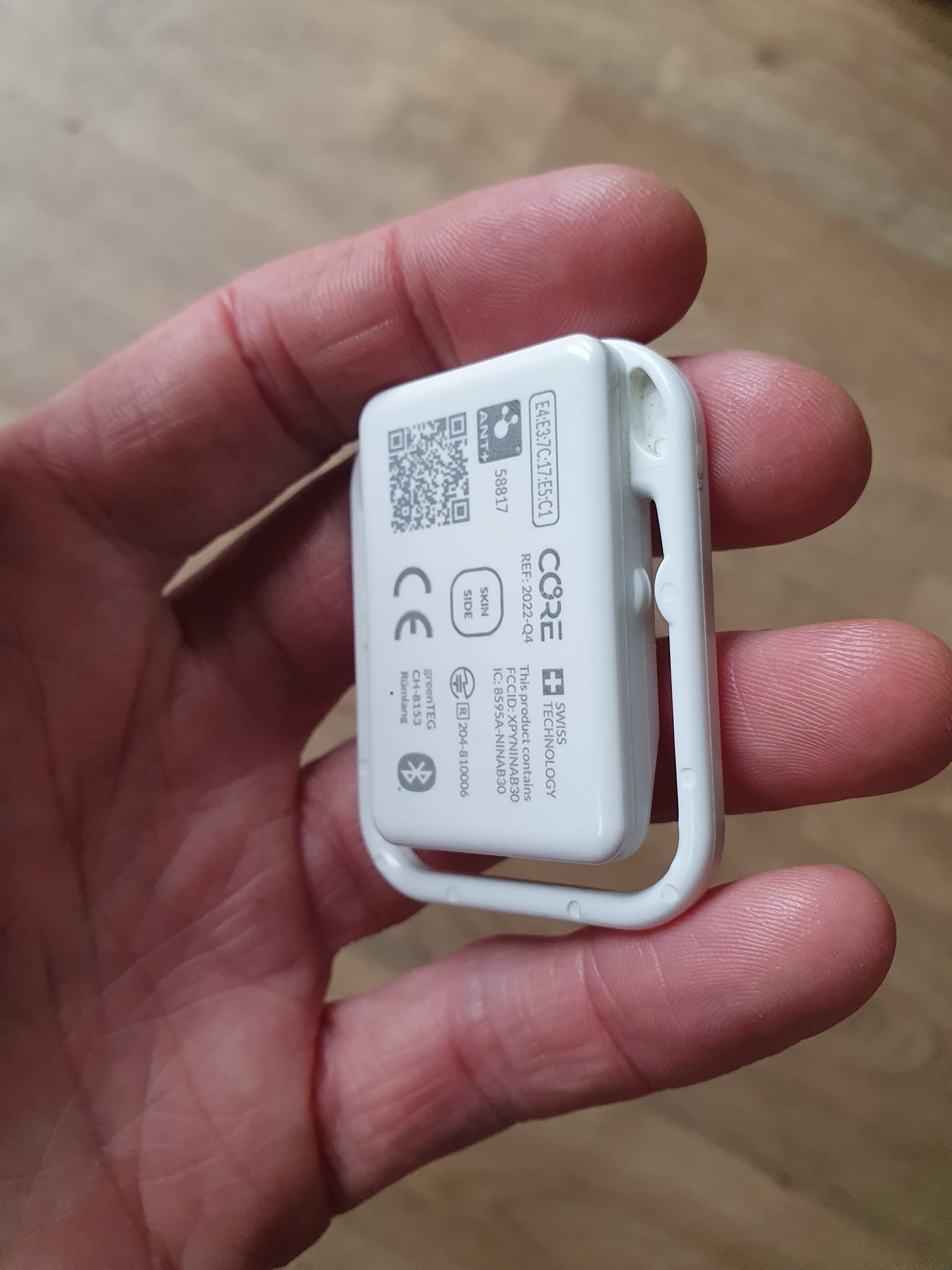The Swiss company, Greenteg, have developed the non-invasive Core body sensor, to add accuracy to heat training and to gauge your core temperature during training when the temperature rises so that you can manage your effort level to be as economical as possible and prevent getting too hot.
Core Body Temperature Sensor
- Category: gadget review
If you don’t live anywhere particularly hot and don’t intend racing anywhere hot, you may well be thinking that the Core sensor is of no use for you, but if you are looking for boosts to your performance, then heat training is beneficial for all. When you heat train, you elevate blood plasma and haemoglobin levels, thereby improving performance in both hot and cold conditions. Similar to the effects of altitude!
The sensor itself is a relatively small (40mm x 50mm and 8.35mm thick), fully sealed waterproof unit that needs to be put onto a strap and held firmly against the skin. Many people attach them to their HR monitor strap around their chest, but I use a HRM strap around my upper arm, where I have had mine fitted. It slides on quite easily and feels pretty secure once around my arm and is comfortable enough to be forgotten about, partly down to it having no real edges or corners as it has quite a rounded off shape.

You can also attach it to your torso with an adhesive patch, but seeing as you use it during workouts paired with a hrm, you may as well just slide it on the strap.
To charge it, you are given a USB charging cable that has a magnet that easily clips on the edge of the unit. Once charged, the official figures from Greenteg are that it will transmit up to 6 days or be in standby for 6 weeks. Enough for most events out there!
How does this thing work and can we trust the data it feeds us? It has a thermal energy transfer sensor within, and this measures the heat that is both leaving and entering the body. The data is then processed by an onboard algorithm built from over one billion data points and finally outputting your current calculated core body temperature. It has been compared to e-pills and probes, which are both proven accurate, and given very similar results. It is proven a reliable method.
Setup was simple. On removing the sensor and its cable, I plugged it in, let the magnetic cable attach and then charge. It flashes green during this process.
Meanwhile I downloaded the app and setup my account. Once charged, I paired it with the app and then with my Polar Verity Sense HRM. Now I was ready to go! I also own a Coros arm HRM strap and this doesn’t pair with the Core sensor, so if you only have a Coros HRM, be aware that you would need a different HRM (Update! Core have recently sent out an update which now means my Coros HRM pairs up with it!).

When you open the app, it will connect with the sensor if it is in range and start downloading data. It usually connects pretty quickly, but sometimes it takes a minute or so. If it is taking a while, I find it better to close the app and reopen. The one thing I find a little frustrating is how long it takes to download each workout. It can take anything up to 10 to 15 mins for a longer session. The only way to see the progress of the download is to click on the little sensor image, then click on Firmware. This will give you a progress bar.
I have worn my Core sensor exclusively for cycling, indoors and out (my knee is not allowing me to run anymore). Initially the bulk of my riding was indoors as it was mid-winter (yes, I am a bit of a wimp with bad weather on the bike) which was great as I don’t have a fan to keep me cool so get incredibly hot and sweaty during rides. Now I could see how hot I was actually getting! After my first few uses, which consisted of an intense session and two easy sessions, I don’t think there were any real surprises. The harder I worked the quicker and higher my temperature rose. On easy sessions, my temperature rose slowly then plateaued after around 15 or 20 mins. It all seemed to make sense to me. What was great though, was that I could monitor it all live and see just how hot I got before it plateaued and exactly how long this took. And this could all be cross referenced with my heart rate and my power output. This makes for some interesting analysis I found. When I was riding outside while still cold, my core temperature rarely rose above 28. Indoors my temperature would occasionally pass 29 which is a huge difference, and certainly at a point where performance is going to be affected. As the Summer warmed up, albeit rather late, so my core temperature responded on outside rides. I have yet to push it over 29, but I think the only way that would happen would be with some serious heat (30+) and/or a long, alpine like climb where there is a long period of minimal wind to cool me! As you can see, due to the use of the Core sensor, I am already much more aware of how my body's temperature adjusts depending on the current temperature, weather and effort level.
What can we do with this data? This is a common query these days. We can monitor more and more things and get streams of data. How do we use this to improve the way we train and race? This is something that the guys at Core have obviously been working on, as since I have been using mine, they have released an update that adds in features that aim to clarify how much the heat training you have carried out will benefit and also what is the accumulated benefit of all your past training.
Heat Training Load is a daily score of between 0 (no contribution to heat adaption) to 10 (maximum contribution to heat adaption). This is only taken from exercise data which means you must use your HRM. It will add all the day's activities together to give a score if you have trained multiple times. I have just carried out a 1hr very sweaty, intense session on the bike indoors and this gave me a score of 2.6.

Your Heat Training Load feeds into your Heat Adaption Score. This looks back at the past days and calculates how well you are heat adapted. The more heat training you carry out, the higher your HAS. If you have two or more days concurrently with no heat training, your score will decline. The HAS is on a 0% – 100% scale. I am currently labeled a ‘Thermal Rookie’ by the app as my score is a lowly 4%. This is partly down to dry but not particularly hot conditions lately and a lack of consistency in training. I would be interested to see how my core temperature would react when running as there is much less wind to cool you, so I would expect to see higher temps for similar effort levels.
As well as measuring your core temperature, you also get your skin temperature. This can make for some interesting analysis. It generally rises as you warm up during exercise, then you start to sweat and gradually it will drop a little as you lose heat with the evaporated sweat and sometimes quite a bit if there is plenty of wind. Meanwhile your core can remain static or still rise while this happens. This can give the effect of feeling cold, when you core temperature is still good or high.
In this review I am reporting my experience of the Core sensor, but there is a whole world of data out there on the subject of heat training and Core have collated a fantastic selection of articles which I strongly suggest you take a look at. Again, I think this demonstrates how Core are trying to make the topic better understood and therefore making their sensors a more powerful tool.
Overall, I think the Core sensor adds another level of self-awareness that can help you further understand how your body is managing the workload you are placing on it. That coupled with the ability to heat train with a level of precision previously unavailable to the amateur athlete adds up to be a fantastic tool! Other than the slow downloads I have been very happy with its operation and if you are serious about your training and love data, I would suggest trying one. If you train in the heat a lot or are training for a hot event, then this would be a good investment.
Which brings me onto the cost! At £230 it is certainly not cheap. I imagine as the tech improves it may drop in price, but for now it is quite a hefty price. It will certainly be too much for some, but as I said above, if you are serious and are facing plenty of heat in training/racing it would be a good investment. If you purchase your core sensor from them direct, you are entitled to a 30-day risk-free trial period which could be helpful for some.
